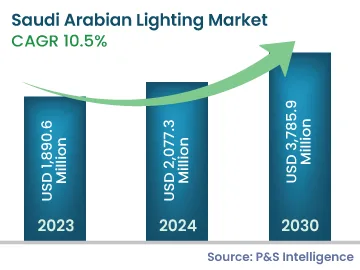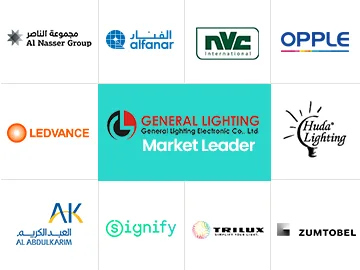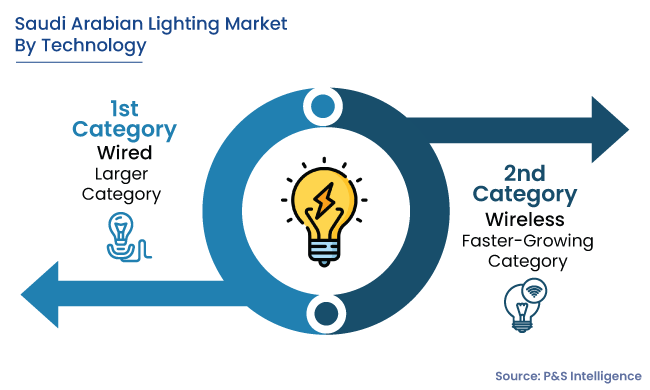Saudi Arabia Lighting Market Analysis
The Saudi Arabian lighting market stood at USD 1,890.6 million in 2023, and it is expected to reach USD 3,785.9 million by 2030, demonstrating a CAGR of 10.5% during the forecast period (2024–2030). The key factors driving the market include the rising adoption of light-emitting diodes (LEDs) because of their customization benefits, energy efficiency, and declining prices, the growing trend of smart homes, and the development of smart cities and other mega projects.
A smart home is equipped with a special connected platform enabling its residents to control and program an array of automated electronic devices with a remote. The rapid adoption of energy management systems and security and access control systems are driving the adoption of smart home technologies.
Since smart homes have already evolved to a great extent in developed countries, they are expected to become popular in Saudi Arabia during the forecast period, ascribable to the government’s supportive initiatives and significant consumer interest in reducing energy consumption. The government plans to rapidly increase both the smart home and smart lighting.
With the advent of technological innovation, many players, such as Microsoft and Google in the technology space, and Philips, Samsung, and LG in the electronics space, are coming up with smart products that enable the user to control all the devices at home or office. Benefits such as energy savings, ease of operation, and internet connectivity have propelled the adoption of smart homes and smart offices.
Moreover, digitization, with the adoption of smart automation and connected technologies, is impacting all applications of smart lighting, including residential, retail, office spaces, and government campuses, by revolutionizing the way a lighting system uses energy and interacts with its surroundings. Apart from this, the advent of IoT in lighting solutions and the emergence of new wireless and wired hybrid protocols for smart lighting solutions are escalating the market size.
Moreover, the customization benefits provided in smart homes are facilitating consumers’ shift toward this technology. Consumers have the independence to customize the smart home system as per their requirements and manage the features or the products. These factors have helped the smart home market grow at a significant rate, and it is expected to drive the market in the future.
LEDs have become much cheaper than any other type of conventional light currently in use. The key drivers facilitating the slump in LED lighting costs are reducing production costs and improving the brightness of the light generated in terms of the power consumed (measured in watts). The decrease in the production cost is achieved by reducing the expenditure on sourcing the material and improving production efficiency. Manufacturers are using silicon instead of sapphire substrates to reduce material procurement expenditure.
Additionally, the production cost is being decreased by combining production steps, such as integrating the package and module. Since, as a result of such efforts, the ASPs have been declining, LED light penetration has been gradually increasing, thus further accelerating the growth of the lighting market in the country.
The Energy Independence and Security Act (EISA) implemented by the government of the U.S. in 2007 led to a major change in the lighting industry, as it replaced outdated, inefficient lighting technology. As a result, LED lighting has become necessary to meet the EISA’s new energy standards. The adoption of LED lighting systems has resulted in reduced energy costs and significant improvements in performance.
However, the installation of an LED-based lighting system requires a high upfront expenditure, which has led to the development of a new financial structure, known as LaaS. It has helped both public and private-sector companies capitalize on the continuous innovations that are taking place in the LED industry.
In the LaaS model, customers pay a monthly fee for the lighting service, instead of upgrading the LED lighting on their own. Customers sign a lease with the service provider, who installs, maintains, and manages the lighting for the term of the contract.
Some of the advantages of the LaaS business model include:
- The model does not require any initial investment
- The model leads to energy savings
- The money saved on energy bills can be used for the monthly payment of the service. Thus, subscribers are cashflow-positive from the beginning.
- All the upgrades are provided by the service provider free of cost.


